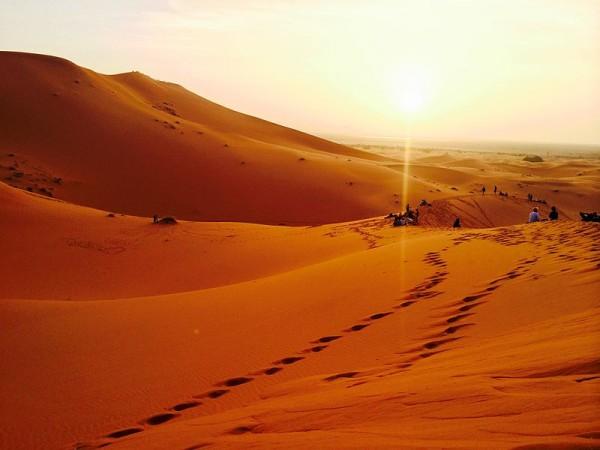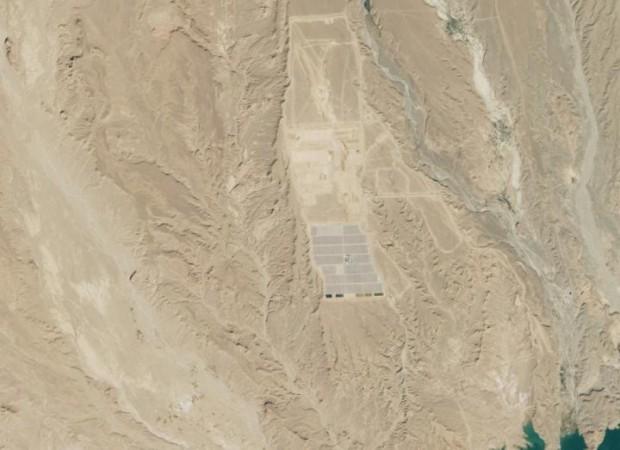
As we all know, the Sahara desert is expanding continuously and it started around a century ago. According to experts, it's one of those natural phenomena that can't be stopped. However, what if there is, indeed, a way to stop the expansion of the world's largest desert?
Recently a group of scientists has proposed a solution to this unique problem. According to their new and ambitious study, published in the journal Science, vast areas of the Sahara desert will have to be covered with solar panels and windmills.
Eugenia Kalnay has been thinking about this solution for over a decade now. Kalnay is a well-known atmospheric scientist at the University of Maryland. She believes this idea could reverse the course of the Sahara desert.
Jule Charney, who was Kalnay's academic adviser at MIT, was one of the very first experts to explain the vicious cycle that ultimately causes desertification. First, there is a drought and the green vegetation of the affected area which disappears as a result of that. Light-colored dirt, remained in the area, reflects more sunlight. This cools the surface of the land and that means less amount of precipitation. So, the amount of rain becomes lesser and even more vegetation gets affected and the process goes on in a loop.

Kalnay believes there might be a way to revitalize these atmospheric currents."It occurred to me that the same [cycle] would go in the opposite way, so it would increase precipitation, and vegetation, and then more precipitation," said the scientist.
Solar Farms in Sahara
Solar panels came to her mind. Since they are dark, they don't reflect the sunlight. So, it's possible that they would heat up the land's surface and fetch back those rain-bringing air currents.
Kalnay then made one of her post-doc researchers to create a computer simulation of the desert, where 20% of Sahara is covered with solar panels. Not only that, the computer simulation also turned the entire desert into a huge wind farm, where it's covered with turbines. Finally, the simulation's result came out exactly how she had expected it to be. It showed that the rainfall did increase enough in the region that it could bring back vegetation. The biggest amount of rainfall increase took place at Sahara's southern edge, called the Sahel.
The super-huge solar farm, which Kalnay pictures, will be vast; almost as big as the entire United States. It would also be capable of producing an amount of electricity that would be four times what the entire world consumes today.
Desert Expansion rate
Only time will tell if Kalnay's vision gets executed and we get to see a green Sahara as recent reports said the Sahara Desert has expanded by about 10 percent since 1920.
A study by National Science Foundation (NSF)-funded scientists at the University of Maryland (UMD) assessed century-scale changes to the boundaries of the world's largest desert and suggested that other deserts could be expanding as well.
"The trends in Africa of hot summers getting hotter and rainy seasons drying out are linked with factors that include increasing greenhouse gases and aerosols in the atmosphere," said Ming Cai, a program director in NSF's Division of Atmospheric and Geospace Sciences, which funded the research. "These trends have a devastating effect on the lives of African people, who depend on agriculture-based economies."
Deserts usually experience low average annual rainfall -- 100 millimeters (less than 4 inches) of rain per year or less. The researchers analyzed annual rainfall data recorded throughout Africa from 1920 to 2013 and found that the Sahara, which occupies much of the northern part of the continent, expanded by 10 percent during this period.
When the scientists looked at seasonal trends over the same period, the most notable expansion of the Sahara occurred in summer, resulting in a nearly 16 percent increase in the desert's average area over the 93-year span covered by the study.
"Our results are specific to the Sahara, but they likely have implications for the world's other deserts," said Sumant Nigam, an atmospheric and ocean scientist at UMD, and the senior author of the study, published in the Journal of Climate.
The Sahara is the world's largest warm-weather desert, roughly equal in size to the contiguous United States.

















